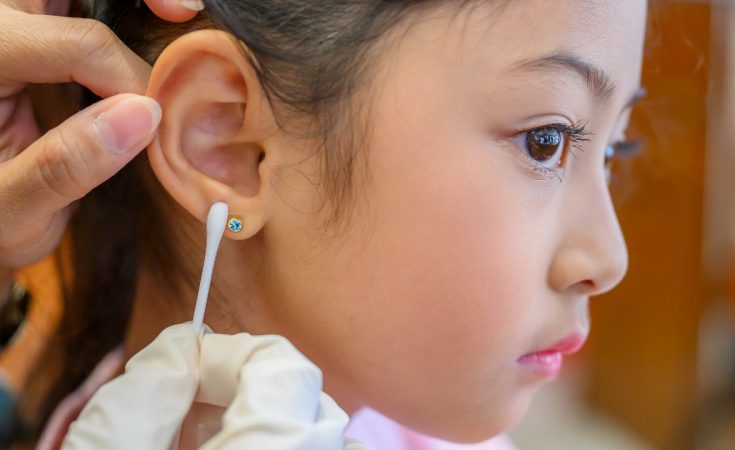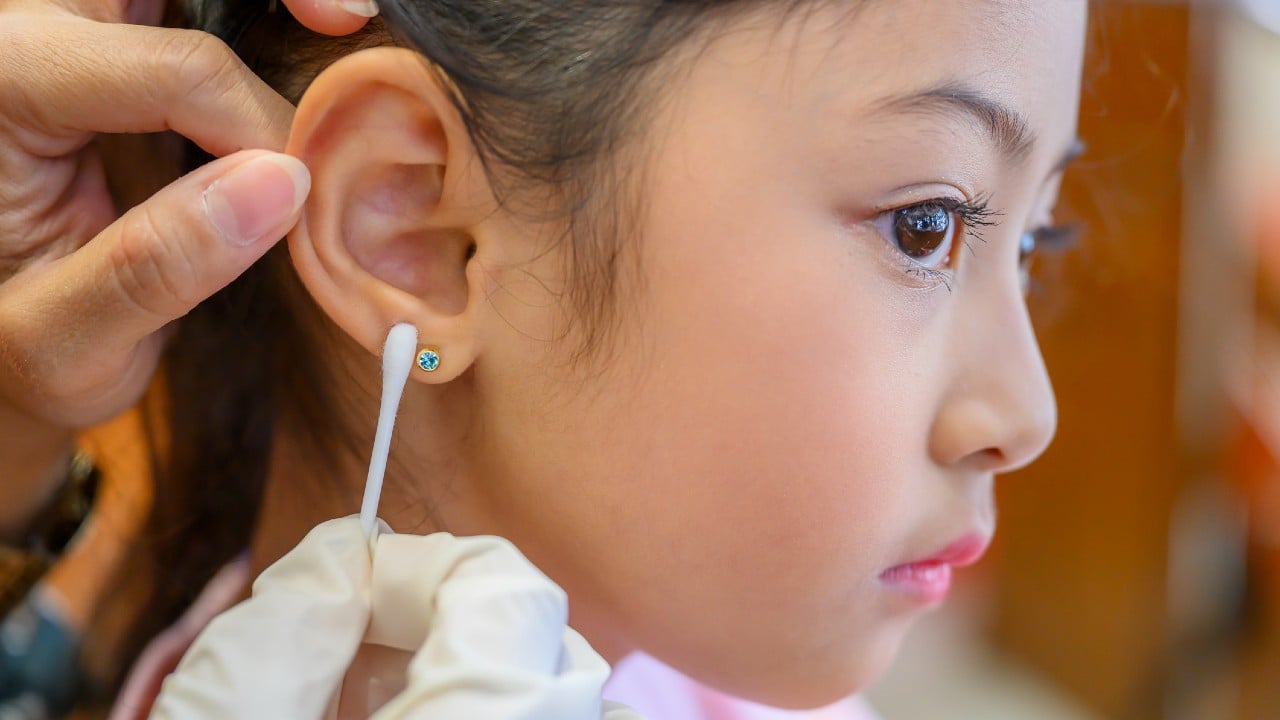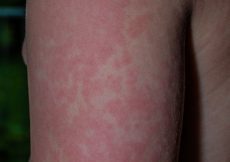“What music do you like? Taylor Swift?”
I’m at an east-end Toronto tattoo studio, but the question isn’t for me. It’s aimed at my 5-year-old daughter, who is here to get her ears pierced.
I giggle nervously and say that Elmo is more up her alley. Minutes later, “Elmo’s Song” is playing throughout the studio.
When my daughter asked just before her 5th birthday to get her ears pierced, I was totally on board. But I knew I wanted to do it in a safe way that respected her body and her right to have control over the process, since teaching consent is an important part of my parenting.
I had a good experience getting my ears pierced at a hair salon as a kid, but I had heard horror stories from my friends about their piercings getting infected after having their ears pierced at the mall.
With all this in mind, I sought out an experienced, professional piercer, who is a member of the Association of Professional Piercers (APP), a California-based organization that sets industry standards for safe piercing. After some research, we found ourselves standing in a brightly lit studio, with potted plants and cool artwork surrounding the tattoo and piercing stations last October.
The studio was super clean and the staff was friendly and welcoming. The piercer, a sweet young woman with brightly coloured hair, chatted with my daughter to set her at ease and happily answered all her questions about her own tattoos and piercings.
The main difference between getting ears pierced at a studio with a needle as opposed to with a piercing gun is the sharpness of the piercing instrument.
“When they use a gun, they use the earring itself to pierce the skin and that generally has a blunt end to it,” says Kristy Bailey, medical director and founder of FCP Dermatology in Toronto. “A sharper instrument is actually less painful while causing less tissue trauma and less bruising.”
(It’s important to note that there’s a difference between the standard piercing guns you’re likely familiar with and the ones used by doctors to perform what’s called “medical piercing”. The earrings used in these guns are made from medical-grade titanium and have a sharper tip, which is then covered completely by the earring backing so it doesn’t poke the wearer.)
The piercer explained the process to my daughter: she would clean her lobes with antibacterial wipes, mark the spot for piercing with a sterile marker and then pierce each ear with a needle. She asked if my daughter had questions and told her that they could stop at any time if she wanted.
“What if you’ve already started?” she asked.
“Any time,” our piercer said. “It’s your body, so you get to decide what happens to it.”
Another concern I had about piercing that led me to a piercing studio was the sterilization of the equipment. “If you really want something to be sterile, it has to be autoclaved, meaning it has to get to a really, really high temperature to kill everything,” says Bailey. “Piercing needles are autoclaved and placed in sterile packages for single-use, but you can’t put a piercing gun in an autoclave, since it’s made of plastic, which will melt.”
With a piercing gun, the cartridge holding the earring itself is usually sterile and single-use, but the piercer will only wipe the plastic part of the gun, which is used hundreds or thousands of times, with alcohol. This gets rid of some of the bacteria, but not all of it, says Bailey.
Although there isn’t a lot of evidence on the higher risk of infection from piercing guns, it was not a risk I wanted to take.
The piercing studio had a selection of earrings for us to choose from, all made from high quality, low-nickel-releasing metals. This is important because, according to a 2020 article in Pediatrics, exposure to nickel from piercings and jewelry is a leading cause of nickel sensitization and allergies, which can lead to more than just itchy ears.
“In some of my patients this leads to generalized rashes from any metal contact and reactions to even low amounts of nickel in their diets, which can cause significant health consequences, such as very severe eczema of the hands and feet and sometimes all over the body,” says Audrey Lovett, a paediatric dermatologist in Montreal.
“For a first pair of earrings especially, it’s important to choose pure materials, like gold, sterling silver or medical implant-grade metals,” she says.
My daughter chose a pretty pair of opal studs made from implant-grade titanium. Another feature of professional-quality studs is that they have rounded or flat backs, so they’re comfortable to wear and sleep in, without anything pointy poking behind your child’s ears.
The piercer led us to the dedicated piercing room at the back of the studio, so we could get comfortable while she put the earrings in the autoclave.
She cleaned my daughter’s ear lobes and used a sterile, single-use surgical marker to mark the right spots for the piercings. This was by far the lengthiest part of the process, as she was meticulous and wanted to make sure that the earrings would be perfectly symmetrical and placed just right.
Then she had my daughter lie down and coached her on how to breathe while she pierced her ears using a single-use needle freshly removed from a sterile package. I was worried about how my daughter would react, since she barely wants to let our paediatrician near her with a stethoscope, but the piercing itself took what felt like a fraction of a second and my daughter hardly flinched.
When we were done, my daughter jumped up and looked in the mirror. She was thrilled with her new look.
The aftercare instructions were simple and our piercer provided a wound-care saline spray to use daily and advised us to keep the earrings in for the two-month healing period. She explained that while it was previously recommended to rotate the earrings as the piercing healed, this is no longer considered a best practice, as it actually interferes with healing.
I’m happy to report that we haven’t run into any issues with her piercings. They healed well and my daughter loves her earrings.
My younger daughter is eager to get her ears pierced, just like her big sister. But at three years old, she doesn’t yet have the maturity to leave the piercings alone while they heal, so we’re holding off on getting hers done for now. But once she’s ready, I see us going back to get her ears pierced with the same piercer.
Stay in touch
Subscribe to Today’s Parent’s daily newsletter for our best parenting news, tips, essays and recipes.



































